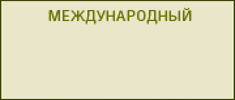List articles
| The competitive environment in the banking sector encourages the production of new banking products, which brings additional benefits to consumers of banking services, but in Russia, in the regional aspect, there is a significant problem that requires detailed consideration, consisting in the concentration of the bulk of bank assets in the hands of a narrow circle of credit organizations. In this regard, we believe that the chosen topic of the study is relevant and timely. The purpose of the study is to quantify and qualitatively interpret the level of competition of credit institutions in the regions of Russia. To achieve the goal, the following were used: a method of comparison, analysis and synthesis, mathematical and statistical methods. The main results include the following: a trend towards a decrease in the number of credit institutions has been identified since 1996, which is caused by the policy of the Central Bank of the Russian Federation to improve the banking sector, as well as high competition; analysis of the dynamics of key indicators of the banking system showed that despite economic sanctions from Western countries, stagnation of the domestic economy after the crisis of 2014, changes in business processes and the way of life of people in connection with the pandemic of the Covid-19 virus, credit organizations in Russia make a profit from year to year. This pattern indicates their high adaptability to changes in the external environment; spatial analysis of indicators characterizing the activities of credit institutions revealed a significant concentration of capital in two entities, this is Moscow and St. Petersburg, thus it is possible to confidently assert the monopolization of the capital market in Russia. The results will be useful to researchers in the field of competition, the capital market and the banking sector, as well as employees of credit organizations in the formation of a strategy for the development of banks. Continue... | |
| The article analyzes the Russian educational and labor legislation, as well as qualification guides and professional standards, in order to determine the regulatory and legal definition of the competence of the heads of Russian universities in managing the competitiveness of educational organizations. The author relies on official sources describing and qualifying the rector’s professional activities in university management in order to identify the requirements for professional managerial competencies that make up the core of the professional leadership of an educational organization, which directly ensure the competitiveness of the university. The author quotes the main legislative provisions establishing the professional status of the rector of a university – the head of a Russian university. As a result of the analysis of legal norms and norms of qualification reference books and professional standards, the author comes to the conclusion that the strategically important competences of higher and secondary leaders of educational organizations to ensure the competitiveness of higher education organizations are currently not represented in the Russian Federation either in qualification reference books or in professional standards. Neither in the state educational standards, nor in the regulatory legal acts of labor and educational legislation. The article concludes with the author’s suggestions and recommendations on the normative reflection in the competences of the heads of Russian universities of the competence in managing the competitiveness of an educational organization. Continue... | |
| The development of the Internet, the transition to the fourth technological order contributes to the quantitative and qualitative change in virtual organizations. A special place in the virtual environment is occupied by the gaming segment, the volume of which in 2018 reached over 116 trillion dollars, nearly doubling in the past five years. COVID-19 has undoubtedly played into the hands of the online gaming industry, increasing sales across all segments. This study analyzes the massively multiplayer online role-playing game that created the phenomenon of the virtual world. It is the virtual game worlds that have formed the niche of the virtual gaming commercial teams (VGCT`s), which specialize in the provision of services for the development of content produced by development organizations for user players. However, in order to successfully operate in the face of tough virtual gaming competition, a commercial team needs both an understanding of the business process and attracting sources of funding. The article discusses the strategy of forming the investment attractiveness of VGCT, as one of the key aspects of competitiveness. The paper presents the author`s definition of the investment attractiveness of VGCT, carried out SWOT analysis of the working VGCT “Zeta”, assessed the investment attractiveness on the basis of unidentified assets. The purpose of the study is to develop approaches to determining the investment attractiveness of VGCT in the specific conditions of the economy of the virtual world of multiplayer games. Brief statement of the problem is to substantiate the need of managing goodwill of a virtual organization as the main tool for increasing its competitiveness. The article used general scientific methods and methods of SWOT-analysis. The definition of the economy of the virtual gaming world of multiplayer role-playing online games is given. The essence of the concept of “investment attractiveness” is revealed in relation to a specific object of research – a virtual gaming commercial team, its assessment is carried out in the context of external and internal factors. It was determined that goodwill constitutes the basis of VGCT’s investment attractiveness, and the task of increasing the competitiveness of VGCT is inextricably linked with the management of goodwill as a set of unidentifiable assets. Continue... | |
|
№ 2(82)
17 may 2021 year
Rubric: New technologies of entrepreneurship education The author: Gromova N. |
The Russian economy is characterized by a relatively low level of labor productivity, 2–3 times inferior to the economies of a number of industrially developed countries. In the presence of well-developed macroeconomic labor productivity estimates in the Russian economy can be noted the limited number of micro-economic studies that have comprehensively examined the factors affecting productivity in companies. The issues of ensuring the growth of labor productivity have become especially relevant for Russian business owners in recent years. This is due on the one hand the sanctions pressure on the Russian economy, on the other hand, the pandemic COVID-19. Active implementation of HR-technologies in the practice of domestic business is just one of the reserves to ensure productivity growth. The purpose of the study is to identify ways to increase labor productivity indicators through the development and implementation of modern HR technologies in Russian companies. The research methodology consists in the analysis of literary sources on the problems of labor productivity and the effectiveness of modern HR technologies in solving this issue, as well as the analysis of scientific definitions within the framework of the research topic. This article indicates that labor productivity is one of the key factors in the competitiveness of the national economy. The influence of such modern HR technologies as technologies of personnel motivation based on KPI, technologies of talent management and technologies of continuous development were shown. The study identified ways to increase labor productivity through the development and implementation of advanced HR-technologies. Continue... |
|
№ 2(82)
17 may 2021 year
Rubric: New business technologies in a competitive environment The author: Osipenko O. V. |
The article highlights the new configurations of investment alliances regulated by the terms of corporate agreements that are in demand in large and moderately large businesses. The author draws the reader’s attention to the reference targets implemented in the operation of the corresponding models of such agreements of investors in the shares of joint-stock companies and shares in the authorized capital of limited liability companies, as well as on the management and legal tools for achieving these goals. Among others, the authors analyze structures that effectively support the joint business practice of majority and minority shareholders, significant minority shareholders who consolidate corporate control with their help, activate the possibilities of corporate agreements concluded under Russian law for the implementation of mergers and acquisitions projects, as well as anti-raider protection target company. The author refers to the new trends in structuring and formatting agreements of participants in domestic business entities: the desire of participants in corporate alliances to consolidate in shareholder agreements specific technologies for implementing cooperation between signatories, corresponding to their actual organizational, financial and (or) management mission in the structure of an investment alliance at a certain stage of the company's development; application of the structure of a corporate agreement as a compromise scheme for getting out of a conflict situation; active participation of interested third parties in determining a special procedure for exercising the rights of participants; integration of the institution of corporate agreement into the sphere of distribution relations; combining the institution of a corporate agreement with other types of transactions, as well as with the construction of freedom of contractual relations. Continue... |
|
№ 2(82)
17 may 2021 year
Rubric: New business technologies in a competitive environment Authors: Chernuhina G., Khramova A. V. |
The relevance and practical significance of the research is determined by the increasing role of intellectual resources in the conditions of digitalization of entrepreneurship. Along with other types, intellectual resources determine the competitiveness of trade enterprises and act as a key factor in their development. One of the main features that characterize the modern economy is a high level of competition, which ultimately leads to the need to maximize the use of all available resources, actively introduce innovative technologies, and quickly adapt to changing market conditions. The scope of the study is expanded by the fact that during the coronavirus pandemic, commercial entrepreneurship in Russia was greatly transformed. suffered and transformed. The pandemic has pushed commerce to online platforms, and contributed to the development of a favorable environment for e-commerce. Currently, a wide range of digital innovations are used in commercial entrepreneurship. The COVID-19 crisis has accelerated the spread of e-commerce to new firms, customers, and products. This allowed the trade enterprises to continue working, despite the limitations of contacts. At the same time, the possession of intellectual capital has a significant impact on the competitiveness of firms. The importance of intangible assets as a source of competitive advantages is growing rapidly. Blockchain and related technologies are currently relevant, many industries are exploring their capabilities, and new ways to use it are constantly emerging. Since the distributed ledger technology creates a secure, verified, and immutable information chain, it finds application in brand protection and enforcement, and is used to track. Continue... |



